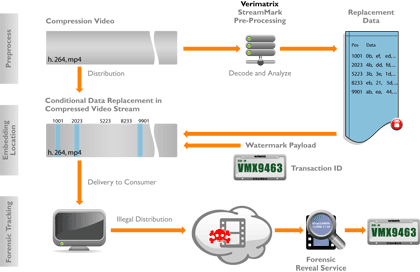I’m almost three weeks late for my write-up of this year’s IP&TV world Forum, so I started this piece for my blog in a rush with a big sense of guilt. It turns out that my intro on the IPTV Vs. OTT debate has taken turned in to an opinion piece on it’s own (follow-on report on IP&TV World Forum 2012 coming soon with interviews from Envivio, Verimatrix and Media Melon CEO’s as well as news and demos from Ineoquest, Siemens, Harmonic, Orca and some others).
For the sake of clarity, in this piece, I’ll use the term IPTV to describe TV delivered over managed networks with guaranteed quality of service as opposed to OTT delivery that has to go over networks not managed by the service provider. IPTV services are generally those delivered by Telco’s (e.g. Orange TV, ATT Uverse), whereas OTT services are usually offered by content owners (BBC, Hulu) or dedicated start-ups (Netflix, Roku).
I gave my first IPTV presentation in 2004. Some visionaries were already talking about OTT. But that’s another story. The first thing I did then was to define the term IPTV because no one agreed on what it actually meant. As far as buzzwords go, IPTV had a pretty good run for its money, staying trendy for almost a decade.
Prior to this year’s IPTV show, I predicted on my blog that OTT would be the only common theme for the second year running.
This year’s IPTV world forum was the biggest yet, yet it was the last. Next year the show is being rebranded. (Incidentally as the IP&TV rebranding never took, I wonder if the new TV Connect rebranding will fare any better; IPTV is a strong brand name). That must be saying something. Has the great IPTV ship sunk under her own weight?
Is IPTV really gone for good, or has it just gone out of fashion? I remember wearing a scarf of my grandfather’s a few years after he died. He’d had it for decades. Yet when I wore it on one evening, I was amazed to receive compliments on being so trendy (I actually have no dress sense when it comes to fashion as you may have noticed). As it happens the design was just making a comeback.
Likewise, might the IPTV World Forum comeback in 20 or 30 years? You’re probably laughing at such a stupid question: technology isn’t like clothing. Well maybe so, but people respond to fashion in the same way whatever the subject.
Some say IPTV has failed because big Telcos that ploughed hundreds of millions of Euros into the technology have not recouped their investment. We’ve tried for years to convince ourselves (and investors) that IPTV was a sound defensive strategy. All the clever multi-play bundling was keeping customers from churning. Actually it was, it’s just that it only put a plaster on the wound without healing it first. IPTV is just a tool and teaching someone how to use a tool from another trade, doesn’t teach her how to actually make a living out of that trade. Belgacom is a very rare counter-example amongst Telcos - having put a real TV exec at the steering wheel; they are now the only ones who can actually claim genuine IPTV success. Ironically much of their technology has recently gone obsolete as NSN their main provider has decided to drop IPTV products.
It’s probably significant that at the same time Siemens (not Nokia Siemens Networks, i.e. NSN) is making a big push back into the TV space, but with an exclusively OTT model.
So what has actually failed with IPTV is the Telco’s attempt to use TV to climb up the value chain. The technology itself needed a few years to have the wrinkles ironed out, but works very well now.
The market cap of any major Telco with a big IPTV offering, when compared with that of Apple or even Google, tells the same story.
Last year I wrote a successful blog entry on why France, having been the birthplace of IPTV, would probably also be its first grave. The article generated a thread of over a 100 comments on LinkedIn and I was quite chuffed when Gavin Whitechurch the head of IPTV World Forum series gave me an analyst spot at last year’s London forum.
My “the death of TV” analyst briefing was a learning experience. There were five other analyst tables and as doors opened, delegates came in and chose their table. The other tables were about fine things in the future (namely OTT) and most had about six people - one even had a dozen. Mine had none! So I’ve learnt from that marketing mistake: this article isn’t about IPTV’s woes but about OTTTV’s great potential.
Back to the real reason I believe it is simply a question of fashion. The current fuss over OTT is still about delivering TV through the Internet Protocol. If we didn’t suffer from a need for novelty all the time we’d be calling it IPTV because it still is.
Delivering video service OTT won’t kill IPTV. On the contrary it’s going to complement IPTV delivery and even help it by extending its reach. It’s an ideal technology for IPTV operators to delivery multiscreen or TV-anywhere experiences.
We’re just finishing a White Paper with Harmonic, Orca, Broadpeak and Viaccess on this very topic. Before OTT can make managed IPTV delivery obsolete, we’ll need a very different Internet from the one we have today. There will be a market for delivering TV over managed networks as far as technology roadmaps can go.

